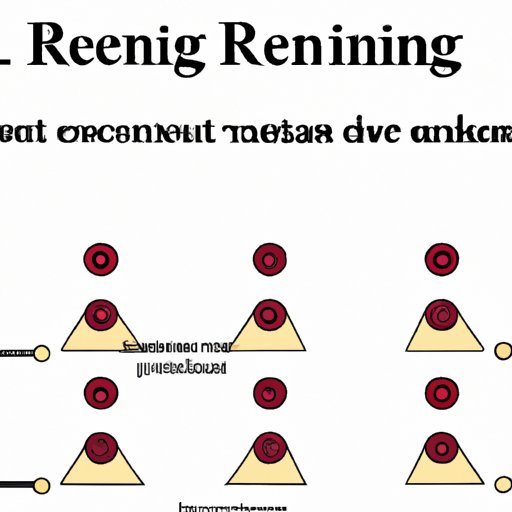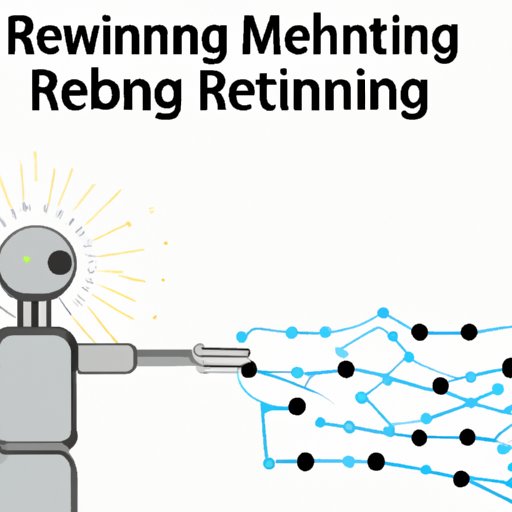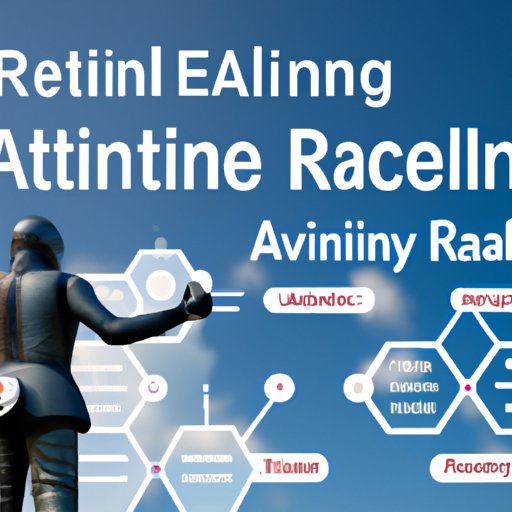Introduction
Reinforcement learning in artificial intelligence (AI) is a branch of machine learning that focuses on teaching an agent how to make decisions based on its environment. The goal of reinforcement learning is to maximize the expected reward for the agent by having it learn from its own experience. Reinforcement learning can be used to solve complex problems such as robotics, game playing, natural language processing, and autonomous vehicles. In this article, we will explore the basics of reinforcement learning in AI, how it is used to improve AI, and some of the challenges associated with developing reinforcement learning algorithms.

Exploring the Basics of Reinforcement Learning in Artificial Intelligence
Before exploring how reinforcement learning is used to improve AI, it is important to understand what reinforcement learning is and how it works. Reinforcement learning is a type of machine learning that involves teaching an agent how to make decisions based on its environment. The agent learns by trial and error, receiving rewards when it takes the correct action and punishments when it takes the wrong action. The goal of reinforcement learning is to maximize the expected reward for the agent by having it learn from its own experience.
How does reinforcement learning work? First, the agent is presented with a state. The agent then takes an action which has an effect on the environment. The agent then receives a reward or punishment based on the result of its action. This reward or punishment is used to update the agent’s policy, which is a set of rules that dictate how the agent should act in a given situation. As the agent continues to take actions and receive rewards or punishments, it slowly learns how to maximize its expected reward.
Examples of reinforcement learning in AI include robotics, game playing, natural language processing, and autonomous vehicles. Robotics applications use reinforcement learning to teach robots how to navigate their environment and interact with objects. Game playing applications use reinforcement learning to teach agents how to play games such as chess and Go. Natural language processing applications use reinforcement learning to teach agents how to understand and produce natural language. Autonomous vehicle applications use reinforcement learning to teach agents how to drive safely and efficiently.

How Reinforcement Learning is Used to Improve Artificial Intelligence
Reinforcement learning has numerous benefits when it comes to improving AI. One of the primary benefits of using reinforcement learning in AI is that it allows agents to learn from their own experiences. Unlike supervised learning, which requires large amounts of labeled data, reinforcement learning only requires the agent to interact with its environment and receive rewards or punishments. This makes it much easier to implement reinforcement learning in real-world environments.
Another benefit of using reinforcement learning in AI is that it allows agents to learn quickly and efficiently. By utilizing trial and error, agents can quickly learn how to maximize their expected reward. This can be especially useful in scenarios where the environment changes rapidly, such as in autonomous driving scenarios.
However, there are also some challenges associated with implementing reinforcement learning in AI. One of the biggest challenges is that it can be difficult to define the reward function. The reward function must be carefully designed so that the agent learns the desired behavior. If the reward function is not properly designed, the agent may not learn the desired behavior.
In addition, reinforcement learning algorithms often require large amounts of data to learn effectively. This can be especially challenging in real-world environments, where collecting large amounts of data can be difficult and expensive. Finally, reinforcement learning algorithms can be computationally expensive, as they typically require large amounts of computation to learn effectively.

Achieving Optimal Solutions with Reinforcement Learning in AI
To achieve optimal solutions with reinforcement learning in AI, it is important to understand the different types of reinforcement learning algorithms and the techniques used to develop them. There are two main types of reinforcement learning algorithms: model-based and model-free. Model-based algorithms use a model of the environment to make predictions about future states, while model-free algorithms do not use a model and instead rely solely on trial and error.
In addition to understanding the different types of algorithms, it is also important to understand the techniques used to develop them. One popular technique is Q-learning, which is a type of model-free algorithm that uses a table of expected rewards to guide the agent’s decision-making process. Another technique is SARSA, which is a type of model-based algorithm that uses a model of the environment to predict future rewards and guide the agent’s decision-making process.
Finally, deep reinforcement learning is a type of reinforcement learning that utilizes deep neural networks to learn from large amounts of data. Deep reinforcement learning has been successful in solving complex problems such as robotics and game playing, and it is quickly becoming one of the most popular techniques for developing reinforcement learning algorithms.
Understanding the Challenges of Developing Reinforcement Learning Algorithms for Artificial Intelligence
Developing reinforcement learning algorithms for AI can be challenging due to the complexity of learning environments. Real-world environments are often too complex for a single algorithm to learn effectively, so it is necessary to develop algorithms that can adapt to changing environments. Additionally, many real-world environments contain data sparsity, meaning that there are few data points available to learn from.
Another challenge with developing reinforcement learning algorithms is dealing with credit assignment problems. Credit assignment problems occur when it is difficult to determine which actions taken by the agent led to a particular reward or punishment. To address this problem, algorithms must be designed to assign credit to the appropriate actions.
Conclusion
Reinforcement learning in artificial intelligence is a powerful tool for teaching agents how to make decisions based on their environment. By understanding the basics of reinforcement learning, how it is used to improve AI, and the challenges associated with developing reinforcement learning algorithms, developers can create powerful AI systems that can learn from their own experience and achieve optimal solutions.
(Note: Is this article not meeting your expectations? Do you have knowledge or insights to share? Unlock new opportunities and expand your reach by joining our authors team. Click Registration to join us and share your expertise with our readers.)
